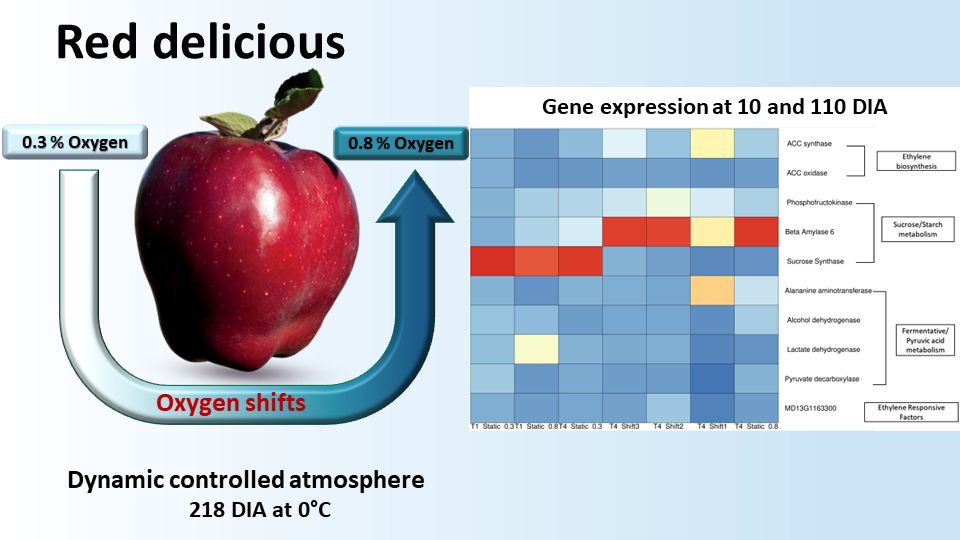Ethanol fermentation- and ethylene physiology-related gene expression profiles in Red Delicious apples stored under variable hypoxic conditions and protocols

Published 2023-03-13
Keywords
- Dynamic Controlled Athnosphere,
- ERF,
- low oxygen,
- Malus domestica,
- postharvest
How to Cite
Copyright (c) 2023 Elige Salamé, Stefano Brizzolara, Marta Rodriguez, Matteo Job, Pietro Tonutti, Benedetto Ruperti

This work is licensed under a Creative Commons Attribution 4.0 International License.
Abstract
Dynamic Controlled Atmosphere (DCA) is beneficial in maintaining specific quality parameters but, due to the extreme oxygen levels applied, can cause adverse effects on the fruit by inducing excessive anaerobic metabolism and the production of off-flavors. The metabolic adaptation and responses of apples (Malus domestica Borkh.) cv. Red Delicious to static or dynamic oxygen concentrations (0.3 and 0.8%, with sequential shifts) during cold storage for 7 months were studied by monitoring quality parameters and the expression of genes involved in sugar, fermentative metabolism, and ethylene physiology. Ethanol content reached the highest levels (around 400 mg/kg FW) under 0.3% oxygen concentration and fruit firmness appeared to be reduced in samples accumulating the highest levels of ethanol. Oxygen switch was effective in reducing the ethanol concentrations with timing-dependent variable effects. The expression of fermentative (alcohol dehydrogenase, lactate dehydrogenase, pyruvate decarboxylase) and sugar metabolism (β-amylase; phosphofructokinase; sucrose synthase) genes resulted to be differently affected by the hypoxic conditions imposed, in particular during the early stages of storage. Sucrose synthase expression appeared to be highly sensitive to changes in low oxygen concentration. Ethylene biosynthesis (ACC synthase and oxidase) genes showed marked differences in their expression in relation to the static and dynamic protocols and the hypoxic conditions, as well as six Ethylene Responsive Factors (ERF) genes, some of them possibly involved in the oxygen sensing mechanism operating in fruit tissues.




